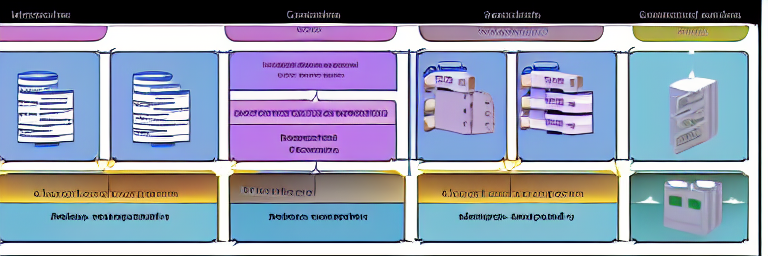What is it?
Software architecture is a high-level structural design of a software system. It partitions the system into subsystems and defines the relationships between them. The aim of software architecture is to facilitate understanding, development, evolution, and reuse of a software system. A software architecture description is a concrete manifestation of a software architecture, typically in the form of a architectural description document.
Some general trends that are likely to impact the future of software architecture include the continued growth of cloud computing, the rise of artificial intelligence and machine learning, and the increasing importance of data security.
Advantages and Challenges
There are many advantages to software architecture. It can help create a more maintainable and scalable software system. Additionally, it can improve communication between stakeholders and help to ensure that the system meets the needs of the users.
However, there are also some challenges associated with software architecture. It can be difficult to create an effective architecture, and it can be even more difficult to change an existing architecture. Additionally, the cost of implementing and maintaining an architecture can be significant.
Development and Characterization
Software architecture is the process of designing and specifying the structure and behavior of a software system. The process involves the development and characterization of a software architecture, including its components, their interfaces, and the behavior of those components.
The development and characterization of a software architecture depends on the specific needs of the project. However, some common steps in the process include:
1. Identifying the overall goals and objectives of the project.
2. Determining the functional and non–functional requirements of the software.
3. Analyzing the system to identify potential risks and issues.
4. Developing a high–level design of the software architecture.
5. Evaluating the design against the project requirements.
6. Refining the design as needed.
7. Documenting the software architecture.
8. Implementing the software architecture.
9. Testing and verifying the implementation.
Components, Interfaces and Their Behaviors
Software architecture of a system will vary depending on the specific requirements of the project. Some common methods for determining software architecture components, their interfaces, and the behavior of those components include using modeling languages such as UML, conducting interviews with stakeholders, and performing a requirements analysis.
Modeling Languages
Modeling languages are used to create models of systems or processes, which can be used to communicate information about the system or process to others. Two popular modeling languages are the Unified Modeling Language (UML) and the Entity-Relationship Diagram (ERD). UML is a graphical language that can be used to create diagrams of systems.
UML diagrams can be used to represent the static structure of a system, the dynamic behavior of a system, or a combination of both. UML diagrams are typically used to communicate information about a system to developers or analysts.
ERD is a graphical language that can be used to create models of the data stored in a system. ERD diagrams can be used to represent the relationships between the entities in a system, the attributes of those entities, and the relationships between those attributes. ERD diagrams are typically used to communicate information about a system to database designers or administrators.
Software Architecture Patterns
There are many different software architecture patterns that can be used to design and build software applications. Some of the most popular patterns include the Model–View–Controller (MVC) pattern, the Model–View–ViewModel (MVVM) pattern, and the Model–View–Presenter (MVP) pattern.
The MVC pattern is a well–known and widely used software architecture pattern. It divides an application into three main components: the model, the view, and the controller. The model represents the data of the application and the business logic that manipulates the data. The view is responsible for displaying the data to the user. The controller handles the user input and coordinates the interactions between the model and the view.
The MVVM pattern is similar to the MVC pattern, but it uses a different approach to coordinate the interactions between the model and the view. In the MVVM pattern, the view model acts as a mediator between the model and the view. The view model exposes data bindings and commands that the view can bind to. The view model also handles the user input and updates the model accordingly.
The MVP pattern is another variation of the MVC pattern. In the MVP pattern, the presenter component coordinates the interactions between the model and the view. The presenter also handles the user input and updates the model accordingly.
These are just a few of the most popular software architecture patterns. There are many others that can be used to design and build software applications.

